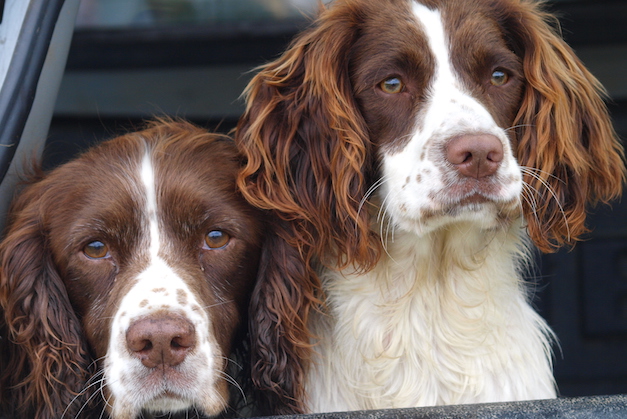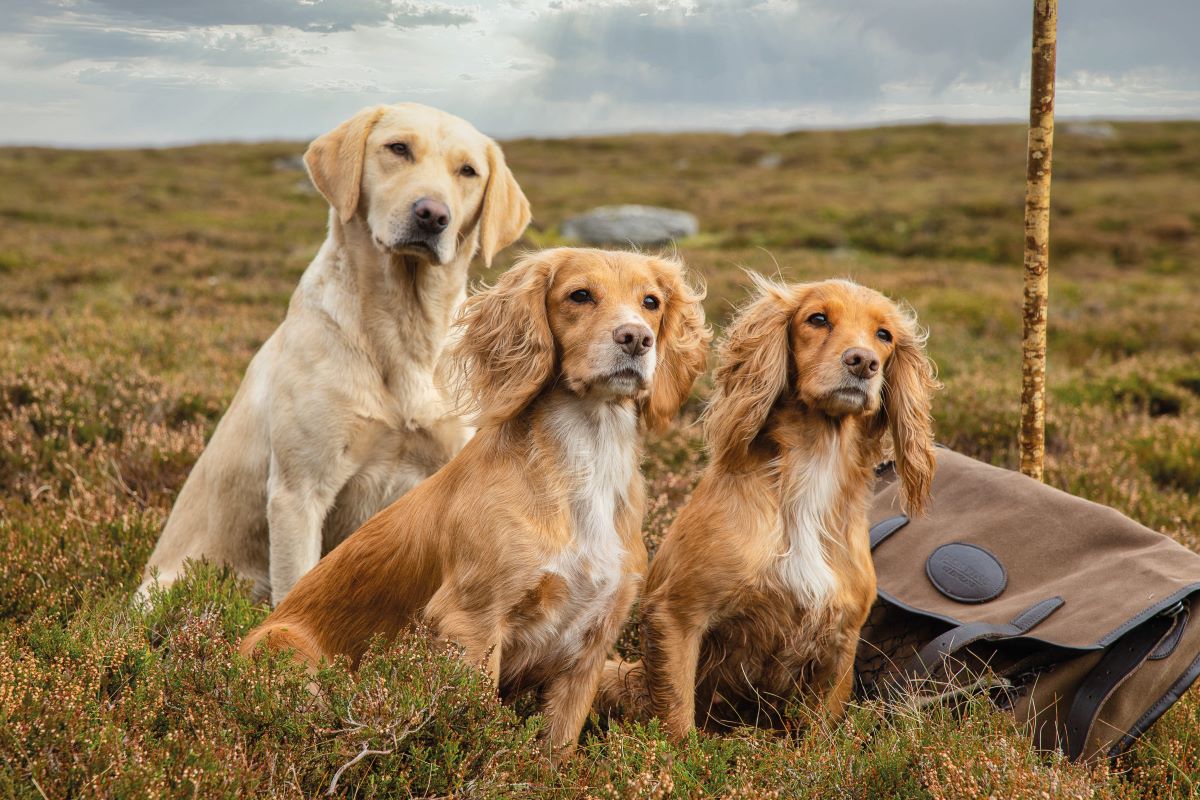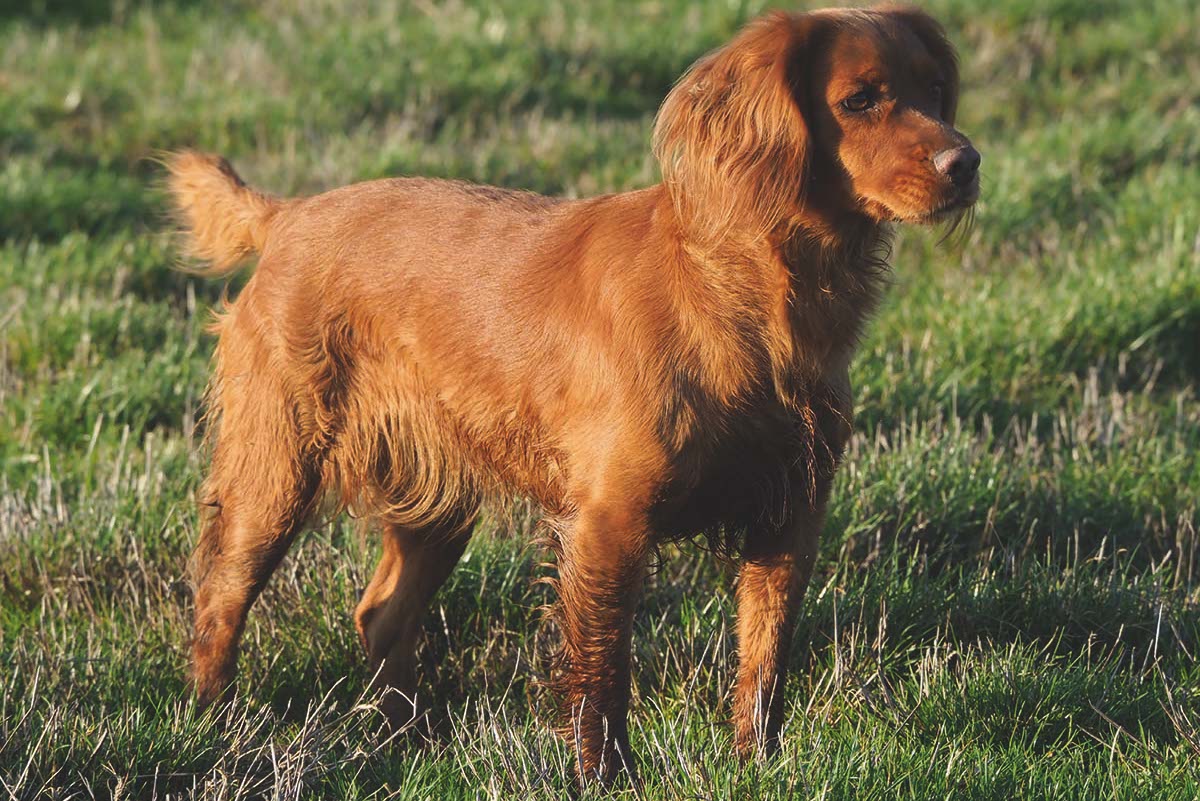The history of spaniels
David Tomlinson delves into the origins of one of our favourite breeds

English springer spaniels
If you want to wind up your cocker spaniel-owning friends, just tell them that their dogs are springers. They may argue otherwise but, technically, it’s true.
History of the spaniel
All spaniels are springers, as the term was originally used to separate those dogs that set game (setters) from those that sprung it (springers). The word springer came into general use in the early 19th century. There’s a fine painting by the artist George Stubbs — best known for his horse studies — of an English springer that doesn’t look much different to the dogs we know today.

A Welsh springer spaniel
However, many Victorian sportsmen would have been unfamiliar with the name springer spaniel, for in those days the type of spaniel we know today as an English springer was generally called a Norfolk spaniel. Curiously, there seems no particular reason why these dogs were associated with the county. Apparently, a former Duke of Norfolk did favour a strain of this kind of spaniel but there isn’t any proof that this is how the name Norfolk came into widespread use.
It wasn’t until 1902 that the Kennel Club recognised the English springer officially, when it granted the breed its own place in the studbook. At the same time, the red and white spaniels of Wales, known for generations as Welsh cockers, became Welsh springers. The English water spaniel was teetering on the brink of extinction, soon to disappear forever.

Sussex spaniel
The Sussex spaniel survived with its name intact, for this short-legged, russet-coloured spaniel did indeed have its origins in the county of Sussex, where it was bred for flushing (springing) game.
In late Victorian times, the term field spaniel was used loosely for any solid-coloured spaniel that was neither a Norfolk nor a cocker, though there was also a strain of coloured field spaniels. By the 1920s, coloured field spaniels had fallen from favour and solids were preferred.
Today’s breed standard is interesting: black, black and tan, blue roan, blue roan and tan, liver, liver and tan, liver roan, and liver roan and tan are all acceptable. However, all other colours, including clear black and white, clear liver and white, orange, red, golden or sable are termed ‘highly undesirable’, which means that they won’t be rewarded in the show ring and they shouldn’t be bred from.

Cocker spaniels can come in a range of colours, with 26 combinations in all, including blue roan
The history of the spaniel – the cocker – is an interesting one, as in the late 19th century the definition of a cocker was a spaniel that weighed under 25lb. You could take a spaniel to a show, exhibit it as a cocker in the morning, give it a good lunch, then let it compete against the field spaniels in the afternoon. Whether anyone did this is debatable but it’s an amusing thought.
The Spaniel Club, founded in 1885, drew up the first cocker breed standard but it wasn’t until 1902 that the Cocker Spaniel Club was founded with a membership of 35. Today it has 1,500.
There’s little doubt that the name cocker derives from the fact that small spaniels were favoured for the pursuit of woodcock. It is our only gundog to take its name from the quarry it was bred to hunt. Incidentally, the French call the cocker le cocker, not, as you might expect, l’épagneul bécasse des bois (woodcock spaniel).

A pack of Clumbers – Dan is the dog looking into the distance (top left)
The joker in the spaniel pack is the Clumber. We know that it takes its name from Clumber Park in Nottinghamshire, where Henry, 9th Earl of Lincoln and 2nd Duke of Newcastle-under-Lyme, had a kennel of these spaniels that had been given to him by the French Duc de Noailles.
Curiously, there is history of the spaniel of this type recorded in France, so nothing is known about the breed’s background or origins. The first record we have of the breed in England is a picture painted in 1788 by Francis Wheatley, called The Return from Shooting. It shows the Duke seated on his shooting pony, accompanied by three Clumber spaniels.
Though quite clearly Clumbers, these spaniels are a little longer in the leg and muzzle than the modern working Clumber and rather darker in their markings. What the Duke would have made of the giant white spaniels that until recently masqueraded as Clumbers would be interesting to learn, but I have no doubt that he would approve of the efforts to restore the Clumber as a proper working spaniel.
I was always led to believe that the word spaniel was derived from the word Spain, the country of origin of these dogs, but did our original spaniels really come from Spain?
Spanish blood
Col Claude Cane, writing more than a century ago in his book The Sporting Spaniel, reckoned that they did, adding that we are probably indebted to Spain for much of the blood in many of our sporting dogs today.
Many later authors have, understandably, expressed the same view but canine historian David Hancock reckons this could be a case of lazy thinking, pointing out in his book, Gundogs: Their Past, Their Performance and Their Prospects, that “there are many references to spaniels being imported into Spain in early times, but not much on their export”.
I’ve been lucky enough to travel throughout Spain and, apart from the odd pet cocker, have rarely seen any dog resembling a spaniel. But if spaniels didn’t come from Spain, where did they come from? It’s a mystery we are unlikely to solve.








